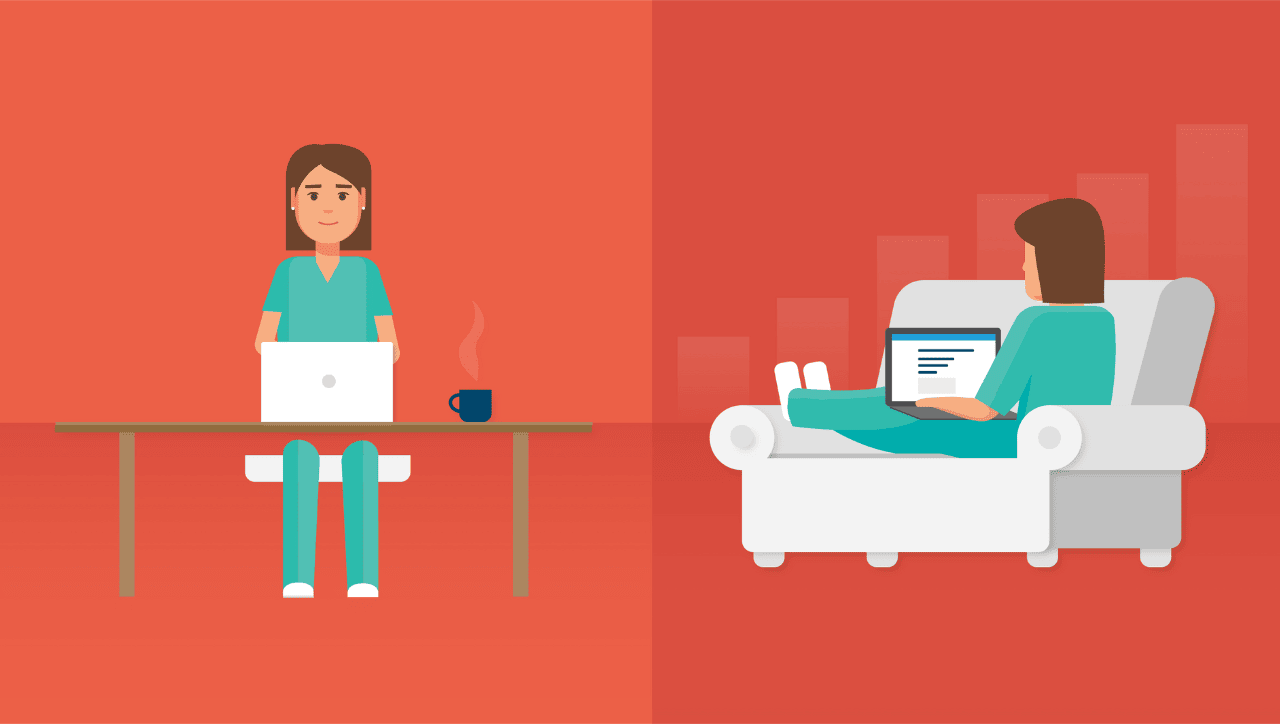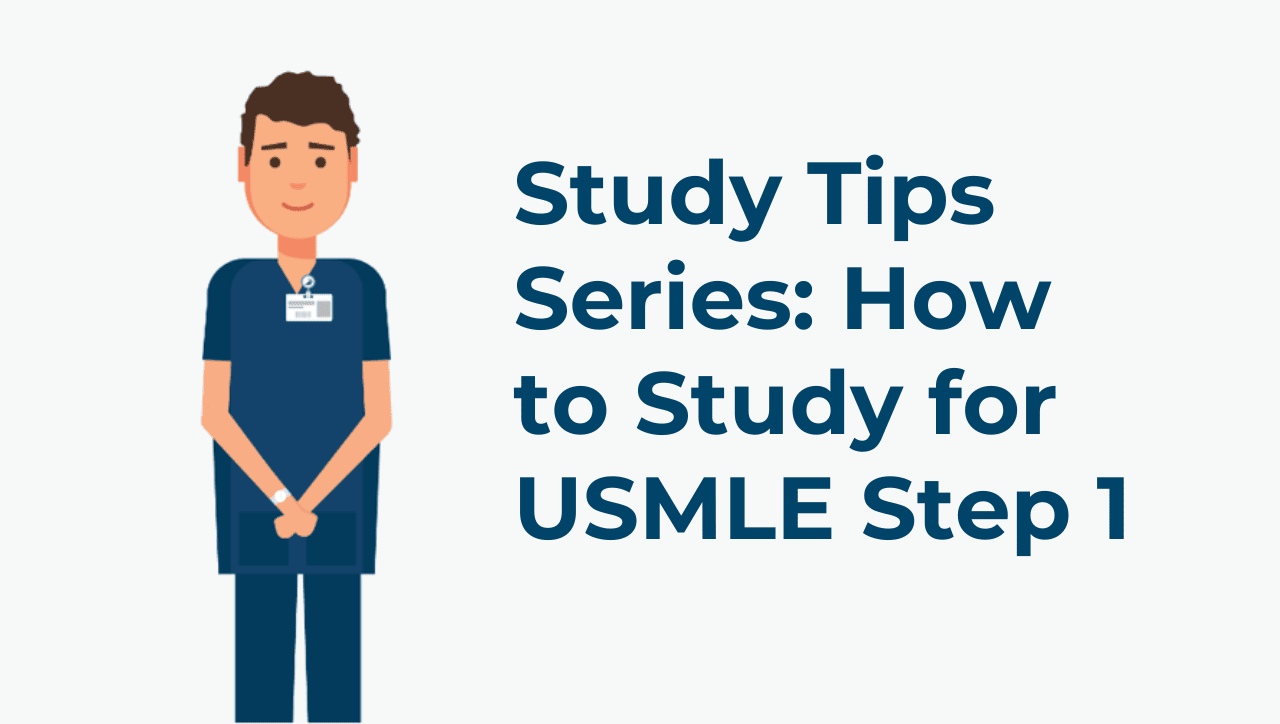USMLE Step 1 Study Strategies for Practice Questions [Webinar Tutor Series: Part I]
Controversial opinion: there is such a thing as a “bad test-taker” and poor test-taking skills might be negatively impacting your performance on Step 1. What you need is a good USMLE Step 1 study strategy that prepares you, so when you sit down to take your exam you will feel confident in yourself.
There is a pervasive belief that success on the USMLE is solely based on developing a strong foundation of knowledge. As such, even in the face of suboptimal and failing scores, students continue to plug away thinking that they just need to memorize more material. While memorization is certainly a necessary skill, it is not the only skill that can lead to success. Many struggling students actually possess a sufficient (or even excellent) level of knowledge but instead continue to score low due to poor test-taking skills and difficulty applying what they know.
Now here is the good news — just because you are not currently a good test-taker does not mean that you cannot learn that skill. In fact, by taking practice questions, students learn to become great test-takers.
So while great test taking skills might not be inherent to you, try practicing using the following 3 strategies to boost your performance on Step 1 and beyond:
Strategy #1: Read the Practice Question Answer Choices First
Watch video of a great free throw shooter and you’ll notice one thing: they follow the same routine every time. The same is true for answering questions on USMLE Step 1. Start by reading the last sentence of the Step 1 practice question (otherwise known as the question lead-in) and the answer choices before anything else.
This will help you while taking the exam for a few reasons:
- In the case of what is termed a “pseudo-stem”, reading the last sentence is all that you will need in order to answer a question correctly. For example, you might encounter a question where the last sentence says something like this: The patient is started on digoxin; which of the following best describes the mechanism of action of this drug? Being able to take advantage of these questions can be crucial for students that struggle with timing or fatigue late in blocks
- Additionally, reading the last sentence and answer choices gives you some insight into the direction of the question, the concept being tested, and the topics that you will need to differentiate between. By having this insight as you read the rest of the stem, it is much easier to catch all of the important details as well as the little details that will help you differentiate between the possible answers
Strategy #2: Learn to Make Answer Conversions
Decades of educational research has shown that the more direct a question is, the easier it is to answer. With this in mind, and as can be seen in the example below, you should learn to convert answer choices to the disease, drug, or organism that they are most likely being used to represent:

Ideally, you can make these conversions when you glance at the answer choices so that you can consider this information when tackling the remainder of the question stem.Based on the question lead-in and answer choices, you’ll know that the question is likely testing congenital infections and you can tailor your conversions and subsequent thinking process to that topic.
Strategy #3: Highlight Key Details and Utilize Process of Elimination
As you study for USMLE Step 1 and take practice questions, your strategy should be to identify the key variables that your answer must account for and apply a process of elimination to work towards the correct answer choice. This can usually be done similarly to the breakdown provided below:

Students can often miss questions due to some combination of the following:
- Inability to recognize all of the key variables in the question stem
- Becoming overly fixated on a variable that they do not understand (eg, the funduscopic examination findings in this question) and lose sight of the big picture
- Not moving past distractors and often prioritize this information over more objective findings (eg, a student that picks Lyme disease here just because of the travel history to Massachusetts, even though it could not explain the examination, laboratory, or imaging findings)
- Panicking on difficult questions and are unable to slow down and focus on what they do know in order to utilize process of elimination
Just like anything in life, the more you practice this skill, the easier it will become and the more natural it will feel on test day.
While there is a lot more to studying than these 3 strategies , this can provide a foundation for how you approach reading a question stem and working through the answer choices. Once you have these skills down, you can move on to the more advanced techniques that were covered in our recent webinar.
How Many Days Should I Study for Step 1?
While there is no one-size fits all number that will work for everyone, most students will need 4-8 weeks of dedicated studying in order to ensure a passing score. However, you should begin studying much sooner in order to trial and error your resources and study strategies.
Ideally, you would like to enter your dedicated study period with a solid understanding of what resources work for you and how to maximize your USMLE Step 1 question bank.
How to Stay Sane While Studying for Step 1
Quite a few strategies are helpful for maintaining sanity. These include:
Setting Daily and Weekly Goals
Navy SEALs talk about how getting through Hell Week becomes more likely when you are able to stop thinking about completing a week of training and instead focus on goals as small as making it to the next activity or next meal. I think that the same is true for Step 1 studying. Rather than focusing on the end result, keep your eye on achievable, daily goals like completing and reviewing your next block of questions.
Treat Your Question Bank as a Learning Resource More Than an Assessment
Missing a question when studying is actually a good thing as it gives you a chance to learn your weaknesses and correct them. Rather than being upset about a miss, focus on learning from your mistake so that it does not hurt you when it matters
Focus on Wellness
You do not have to be a study robot to pass Step 1. Most students will benefit from taking at least one half day off per week and the majority can afford to take even one full day off. Daily, it is rarely necessary (or beneficial) to study more than 8 hours. Beyond that, eating well, sleeping 7-8 hours a night, and maintaining an adequate level of physical activity can often provide major benefits to your performance
Do Not Isolate
Make sure that you are staying engaged with at least a few people that can serve as a support group. This can be your peers that are also studying for Step 1, students that are ahead of you, non-medical friends, and family.
Do Not Be Afraid to Ask for Help
Many students will benefit from working with a therapist in order to address anxiety and other issues that can impact their performance. If you feel that this could be beneficial for you, I would definitely encourage you to take this step.
Using Question Banks before Taking Step 1
Every student should complete at least one question bank while also taking the time to repeat their incorrect questions. However, if possible, most students will significantly benefit from doing a second question bank as this provides additional insight into how a topic can be tested. Additionally, students that need to work on test-taking skills will benefit more from completing a second question bank than resetting and repeating one that they have already completed as this allows them to practice their critical thinking on new questions. Furthermore, exposure to new questions is usually a better way to ensure that you really understand the material.
Explore TrueLearn Step 1 SmartBank
Learn MoreAbout the Author
Christopher Carrubba, MD, is an experienced medical education executive with over 12 years of experience in USMLE and COMLEX tutoring, question writing, and content development. During residency in Internal Medicine at the University of Colorado, he was hired to the position of medical director at MedSchool Tutors where, in addition to completing over 5,000 hours of personalized tutoring, he was responsible for hiring and training new tutors and establishing consulting relationships with medical schools and content providers. In 2017, he began his own tutoring and consulting firm where he is still active as a personal tutor and consultant for medical schools. He is also a medical director at TrueLearn and is responsible for item development in the USMLE and shelf banks. His focus is on creating content that mimics the tutor experience and provides students with multiple learning methods and an opportunity to improve their test-taking skills. He has taken several courses in learning theory and applies this to his work. In his free time, he enjoys spending time with his wife Aakriti and two sons, Donovan and Kairav.


